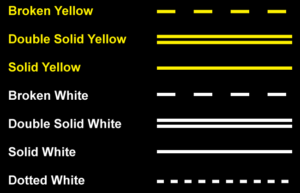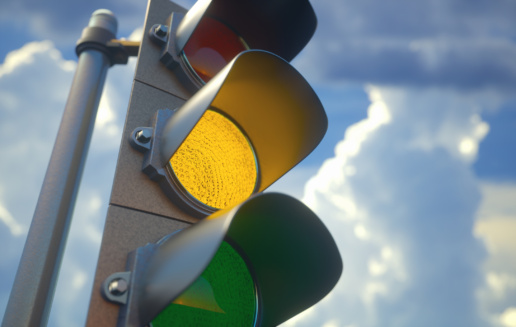In life, people cross the line all the time. The roads are no different.
Most of us had to take drivers education. Yes?
So, one of the basic things we learn in drivers ed is what the different line colors and types mean.
“Highway markings, used alone or to supplement other traffic control devices, provide important guidance and information to drivers without requiring them to divert their attention from the roadway. You should recognize all of the pavement markings and understand what they mean.”
– Your Driver’s Manual
On the roads, however, few people seem to understand them.
Perplexing.
So, let’s review.

BROKEN WHITE LINE:
You may change lanes IF it is safe to do so.
SOLID WHITE LINE:
You are required to STAY within the lane; also marks the shoulder of the roadway.
YELLOW LINES:
- These mark the center of a two-way road used for two-way traffic.
- You may pass on a two-way road IF the yellow centerline is BROKEN.
- When a solid and a broken yellow line are together, you must NOT pass if you are driving next to the solid line.
- Two solid yellow lines mean NO passing. Never drive to the left of these lines.
Driving 101, right? Apparently not.

Let me re-emphasize a couple of points from above for you.
DO NOT CROSS a SOLID white line.
DO NOT CROSS two SOLID yellow lines.
Capiche?
This is not rocket science people. It is responsible and safe driving.
Resources:
Driversed.com: Signs, Signals & Markings



